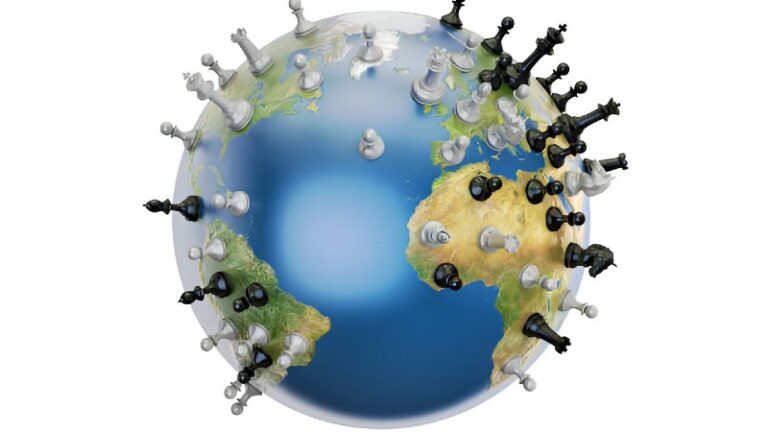The Current Landscape of Geopolitical Conflict
2024 has been marked by overlapping crises:
- Russia-Ukraine War: Ongoing military escalation, weakening Western unity, and the potential partition of Ukraine.
- Middle East Conflicts: Israel-Hamas fighting with ripple effects from Houthi attacks in the Red Sea, threatening 12% of global maritime trade.
- Election Uncertainty: With more than 64 nations voting, political polarization is shaping fiscal policies, trade dynamics, and alliances.
These crises are not isolated they are amplifying one another, creating what economists call a polycrisis. This dynamic challenges global stability more than any single conflict in the past decade.
How Conflicts Are Reshaping the Global Economy
1. Financial Markets on Edge
Conflicts create volatility through sanctions, capital controls, and uncertainty. For example, higher geopolitical risk index (GPR) values are associated with rising oil prices, capital flight, and weaker private sector credit—especially in emerging markets.
2. Trade and Supply Chain Disruptions
From grain exports in Ukraine to Red Sea shipping blockages, chokepoints are now a recurring theme. Businesses reliant on just-in-time supply chains face unprecedented costs due to rerouting and rising insurance premiums.
| Chokepoint | Global Trade Share | Conflict Risk |
|---|---|---|
| Red Sea (Suez Canal) | 12% | Houthi missile attacks |
| Black Sea | 30M tons grain exports | Russia-Ukraine war |
| Taiwan Strait | 50% semiconductor trade | US-China tensions |
3. Inflation and Resource Pressures
Conflict-driven disruptions increase food and energy prices worldwide. For instance, the war in Ukraine pushed wheat prices up by more than 30% in 2022, while Red Sea disruptions are expected to keep shipping insurance rates elevated in 2024.
The Invisible Frontlines of Geopolitics
Most analyses focus on military strategy or energy politics. But beneath the surface, three invisible frontlines are shaping the trajectory of global conflicts:
1. Digital Supply Chains
The world’s economic lifeblood increasingly flows through submarine cables, satellites, and data centers. Cyberattacks targeting these assets—such as ransomware campaigns or state-sponsored sabotage—could paralyze not only governments but also critical industries like healthcare and finance.
2. Insurance as a Geopolitical Stabilizer
Insurance markets, often overlooked, are becoming tools of resilience. Political risk insurance and contingent business interruption coverage allowed exports to continue through the Black Sea despite the Ukraine war, proving that financial instruments can act as geopolitical shock absorbers.
3. Populism and Domestic Polarization
Conflicts abroad and economic shocks at home are fueling populist movements. Studies show that under populist governments, countries experience lower medium- and long-term GDP growth. This internal political instability then feeds back into weaker international cooperation—creating a vicious cycle.
Elections as Geopolitical Flashpoints
More than half the world’s population is voting in 2024. The results have far-reaching implications:
- United States: A potential return of Donald Trump could lead to a 10% tariff on all imports, disrupting global supply chains and weakening NATO commitments.
- Taiwan: Election outcomes may escalate US-China tensions over the semiconductor supply chain.
- European Union: Rising far-right influence threatens EU unity at a critical time of geopolitical strain.
These elections are not merely domestic events—they function as geopolitical turning points with global economic consequences.
What Lies Ahead
Analysts see three possible escalation paths for current conflicts:
- Major Conflict: Localized but intense (e.g., Six-Day War 1967).
- Severe Conflict: Involving major powers with direct intervention (e.g., Gulf War 1991).
- Extreme Conflict: Prolonged and multi-front, potentially involving cyber and space domains (e.g., Cold War parallels).
The probability of a polycrisis-induced global recession has increased, with risks of monetary overtightening, energy price shocks, and persistent supply chain vulnerabilities.
Building Resilience in an Era of Geopolitical Volatility
Instead of focusing solely on crisis response, policymakers and businesses must adopt proactive strategies:
- Redesigning supply chains for redundancy, not just efficiency.
- Strengthening insurance markets through public-private partnerships to protect against systemic shocks.
- Revamping global institutions like the WTO and IMF to handle fragmented markets and climate-related disruptions.
- Investing in cybersecurity as a core national and corporate defense strategy.
Conclusion
The latest global conflicts are more than isolated wars—they are catalysts accelerating deeper shifts in how economies, institutions, and societies function. By examining the invisible frontlines—digital supply chains, insurance systems, and domestic polarization we uncover dynamics often missed in traditional analysis. To navigate the years ahead, resilience must be treated not as a reaction, but as a strategy.
Geopolitics is no longer a backdrop to economics it is the stage itself.
Frequently Asked Questions (FAQs)
What are the main drivers of the latest global conflict?
The conflict is driven by ongoing wars such as Russia-Ukraine and Israel-Hamas, U.S.-China tensions, cyber warfare, and internal political polarization fueled by populism.
How are elections influencing global stability in 2025?
With more than 60 countries holding elections, shifts in trade policy, foreign policy, and domestic populism are amplifying uncertainty in the global economy and security landscape.
What role does the global economy play in escalating geopolitical risks?
Economic vulnerabilities such as inflation, energy shortages, and fragile supply chains intensify political instability and increase the likelihood of conflict spillovers across regions.
Why are digital supply chains considered an invisible frontline of conflict?
Cyberattacks, misinformation campaigns, and disruptions in semiconductor and technology networks now serve as non-traditional battlegrounds where states and non-state actors compete for dominance.
How can businesses and policymakers prepare for these risks?
By diversifying supply chains, investing in cybersecurity, strengthening alliances, and adapting flexible fiscal and trade policies, stakeholders can mitigate exposure to geopolitical instability.


